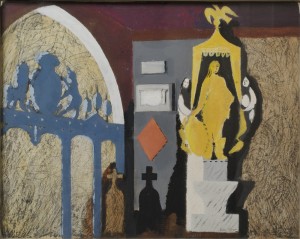In 2025, we mark the 70th anniversary of Lydiard House opening its doors to the public—a milestone that celebrates not only a beloved heritage site but also a remarkable story of preservation and community spirit. Nestled in the heart of Lydiard Park, the house stands today as a lasting symbol of resilience, vision, and just a little enchantment.
Once the ancestral seat of the St.John family, Lydiard House faced near-certain ruin by the mid-20th century. But thanks to the foresight of Swindon’s visionary Town Clerk, David Murray John—best known for leading the town into modern prosperity—its fate changed. During World War II the estate was used as an American hospital camp. Soldiers wandered the neglected grounds and peered into empty rooms, where plaster crumbled and woodwork decayed.
When the estate was put up for sale during the war, Murray John recognised its historic and cultural value. In 1943, Swindon Corporation purchased the 18th-century house and 147 acres of parkland for just £4,500—an extraordinary act of preservation at a time when many of England’s great country houses were lost forever.
Restoring Lydiard was a daunting challenge. Yet through careful use of resources and a groundbreaking government grant in 1949—one of the very first awarded for historic restoration—the council began reviving the house. Most of the work was carried out by the council's own Direct Labour Organisation, a point of civic pride that still resonates today. Lydiard’s restoration helped shape national policy on protecting heritage buildings and earned wide admiration, especially as no formal government strategy existed for such efforts at the time.
Architects, historians, benefactors and tradesmen came together to breathe life back into the estate. From Country Life magazine to philosopher and writer Aldous Huxley, newlyweds, scout camps, and local farming families, Lydiard captured imaginations. When it reopened in May 1955, the public celebration was nothing short of a triumph for Swindon.
Today, Lydiard Park welcomes visitors year-round with its serene lake, a restored walled garden, historic church, and cultural events. Two original portraits—the 2nd Viscount St. John and his wife Anne Furnese, who oversaw the house’s 18th-century transformation—were the only artworks to hang in the house on opening day. Their vision endures in every stone, every path, and every story Lydiard continues to share.





